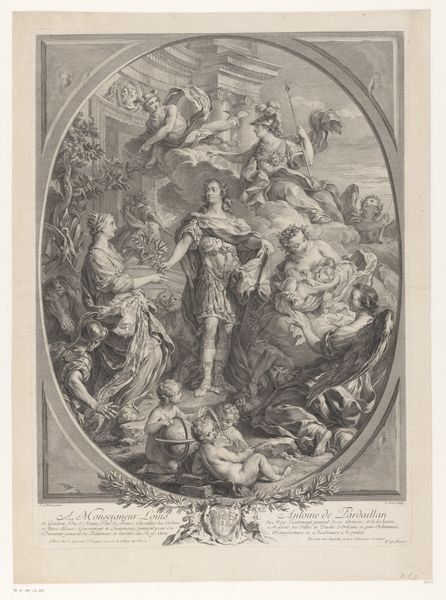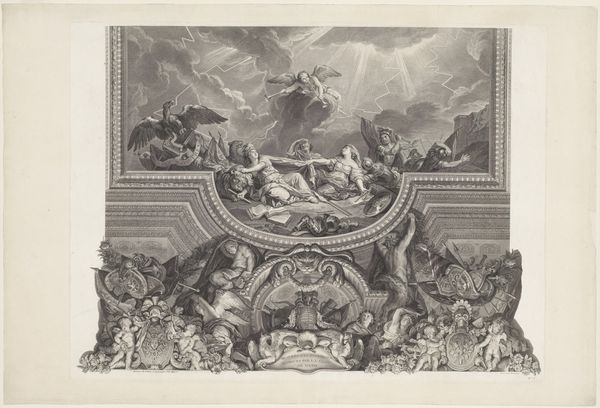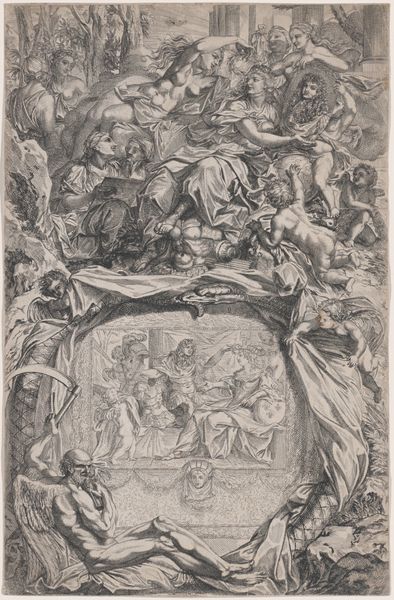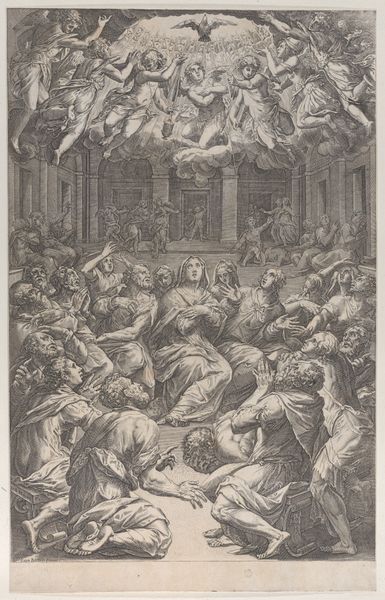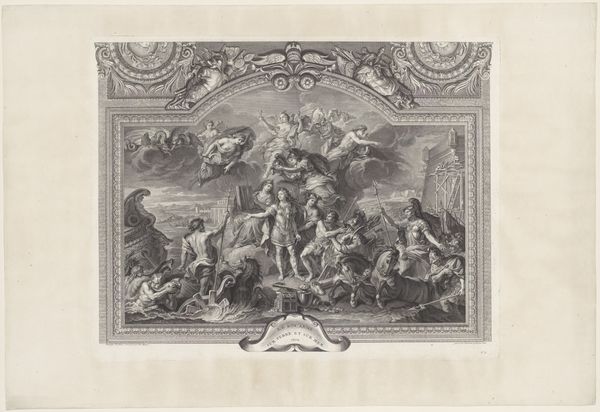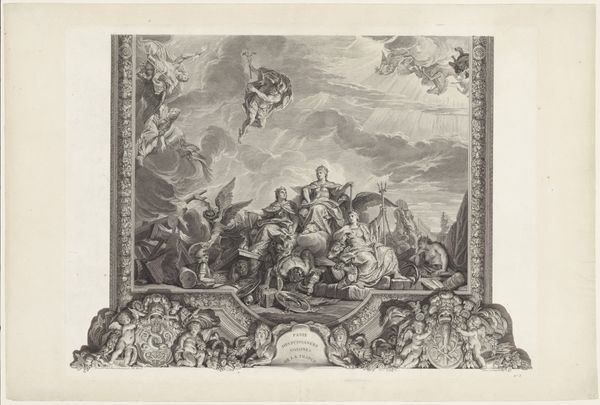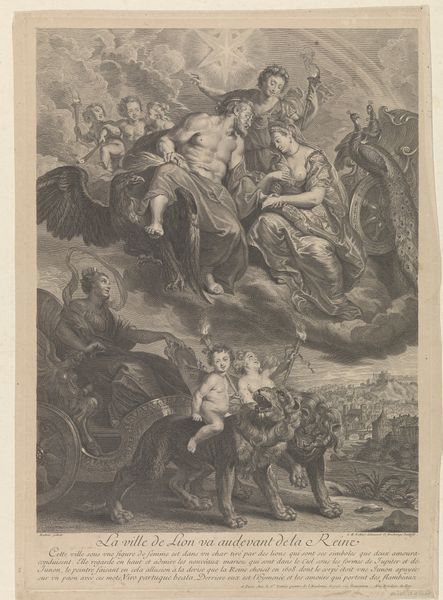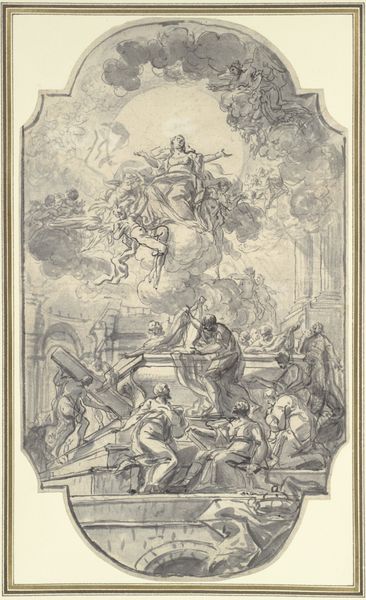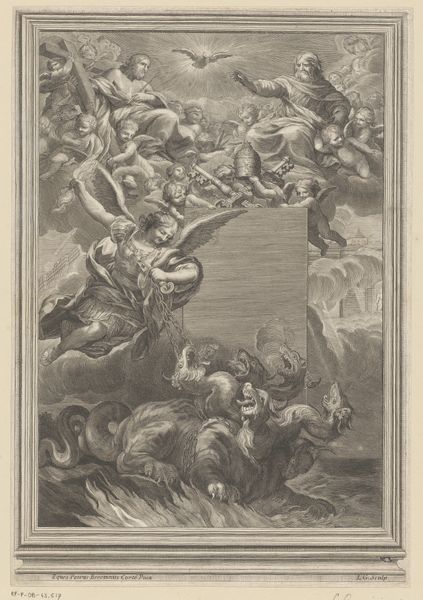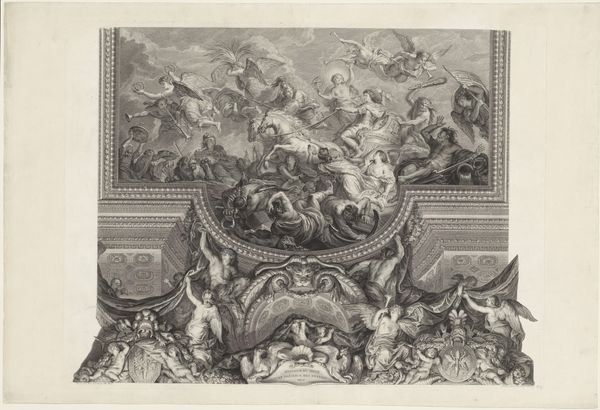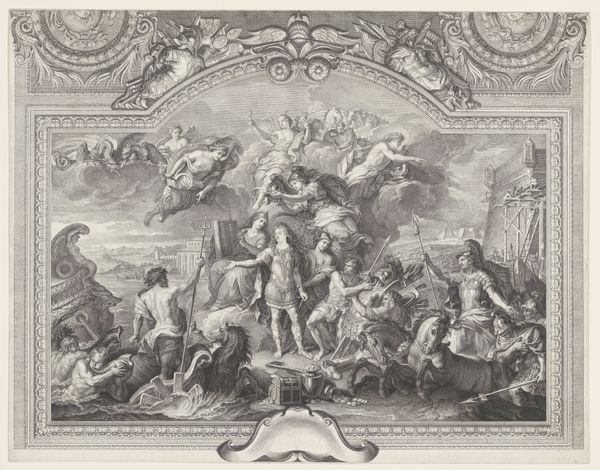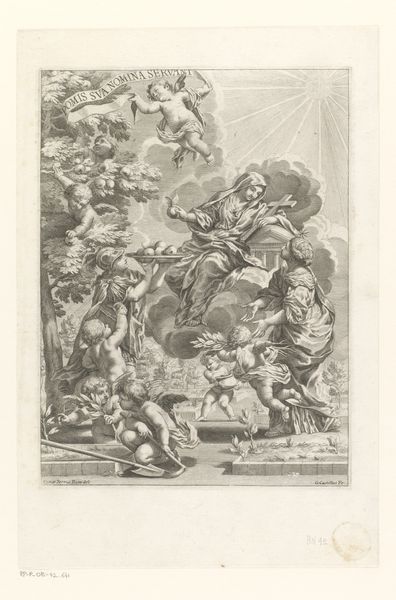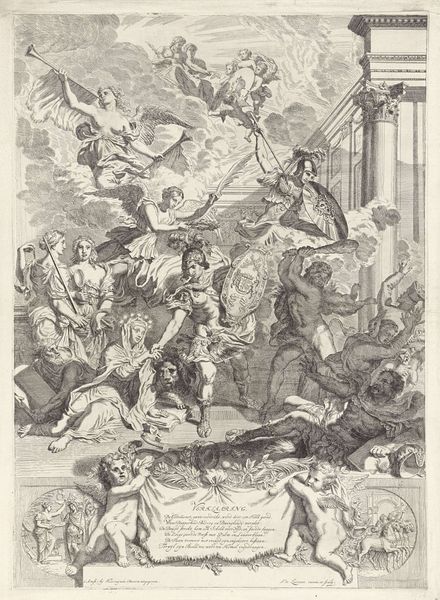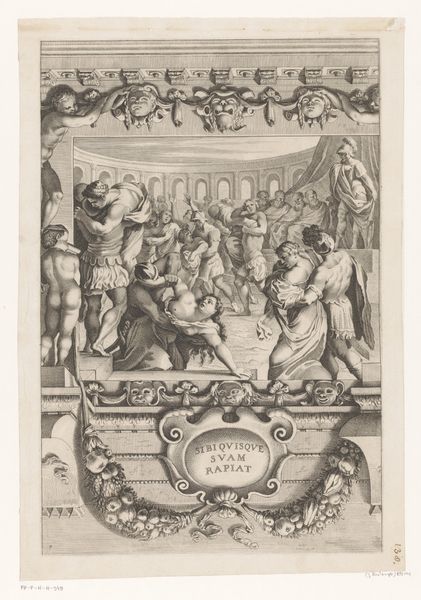
The apotheosis of James I in an oval at center, friezes with putti and garlands on either side 1720
0:00
0:00
drawing, print, engraving
#
drawing
#
allegory
#
baroque
# print
#
figuration
#
history-painting
#
engraving
Dimensions: Sheet (Trimmed): 12 9/16 × 18 1/4 in. (31.9 × 46.4 cm)
Copyright: Public Domain
Simon Gribelin II created this engraving, "The Apotheosis of James I," sometime between 1661 and 1733. It is an allegorical representation of King James I's ascent to divine status. Engravings such as this served as potent tools for shaping public perception. Royalty often sought to legitimize their power through visual narratives. Here, the deification of King James isn’t just a religious statement. It’s a declaration of political authority, reinforcing the notion of the divine right of kings. Notice how the putti, or cherubic figures, and garlands frame the central oval, creating a sense of reverence and celebration. James is shown ascending to the heavens accompanied by classical gods and allegorical figures. What does it mean to see political power imbued with such overt religious symbolism? Ultimately, this image prompts us to consider the relationship between power, representation, and belief in early modern Europe. It invites us to question the narratives that are constructed around those in authority.
Comments
No comments
Be the first to comment and join the conversation on the ultimate creative platform.
